Igneous, Sedimentary, and Metamorphic Rocks

Remember learning about the water cycle when you were younger—how water evaporates into the atmosphere, condensates to form clouds, and then precipitates back into bodies of water? Well, today we’ll be looking at a different cycle: the rock cycle!
There are three types of rock, which flow and transform into different phases in a continuous cycle. Unlike the water cycle, the rock cycle takes much, much longer to repeat. We’re talking tens of millions of years for one rock to complete the cycle. But before we get into each part of the rock cycle and how the different rocks are formed and transformed, let’s talk about each type of rock first!
Sedimentary Rock
The first kind of rock we’re going to talk about is sedimentary. Sedimentary rocks, which cover approximately 75% of the Earth, are formed by the accumulation of small particles that result from the weathering of other rocks.
Weathering
Weathering is just the wearing down of something. For rocks, there are two types of weathering: mechanical and chemical. Mechanical weathering involves physical forces, such as water and wind, breaking down rocks into smaller pieces. Chemical weathering is the erosion of rock due to a chemical transformation, such as dissolution or oxidation. Mechanical and chemical weathering work simultaneously and reinforce each other. As mechanical weathering breaks a rock into smaller pieces, more surface area is exposed to chemical weathering. The rate of weathering can depend on what the rock is made of or the climate.
So, back to the actual rocks. There are three types of sedimentary rocks: detrital, chemical, and organic.
Detrital Sedimentary Rocks
Detrital sedimentary rocks form from sediments that have been weathered and transported. Particle size is mostly used to distinguish among these different rock types. For example, shale, a sedimentary rock, has very small silt and clay-sized particles, which are barely visible to the human eye.
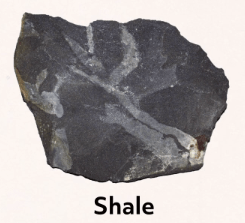
Sandstones, which you have probably picked up if you’ve ever been to a beach, have sand-sized particles that you may be able to see with the naked eye.
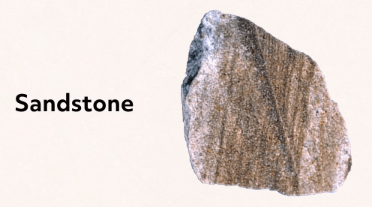
The third type of sedimentary rock is a conglomerate. Conglomerates are composed of gravel-sized particles that are rounded.
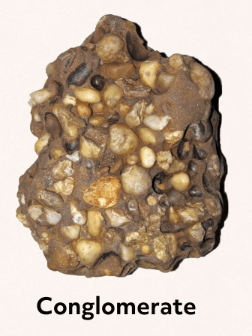
If the particles are angular, then they are referred to as breccias. Either way, these rocks are both easily distinguishable to the naked eye.
The next type of rock is a chemical sedimentary rock.
Chemical Sedimentary Rocks
Remember, all sedimentary rocks are formed by the accumulation of sediment. In the case of chemical sedimentary rocks, this sediment is precipitated material that was once in a solution. For example, if you had a glass of saltwater and left it alone for long enough, eventually all the water would evaporate, and you’d be left with just salt in the glass. You have now precipitated salt out of a solution. This is exactly what happens at Death Valley in California.
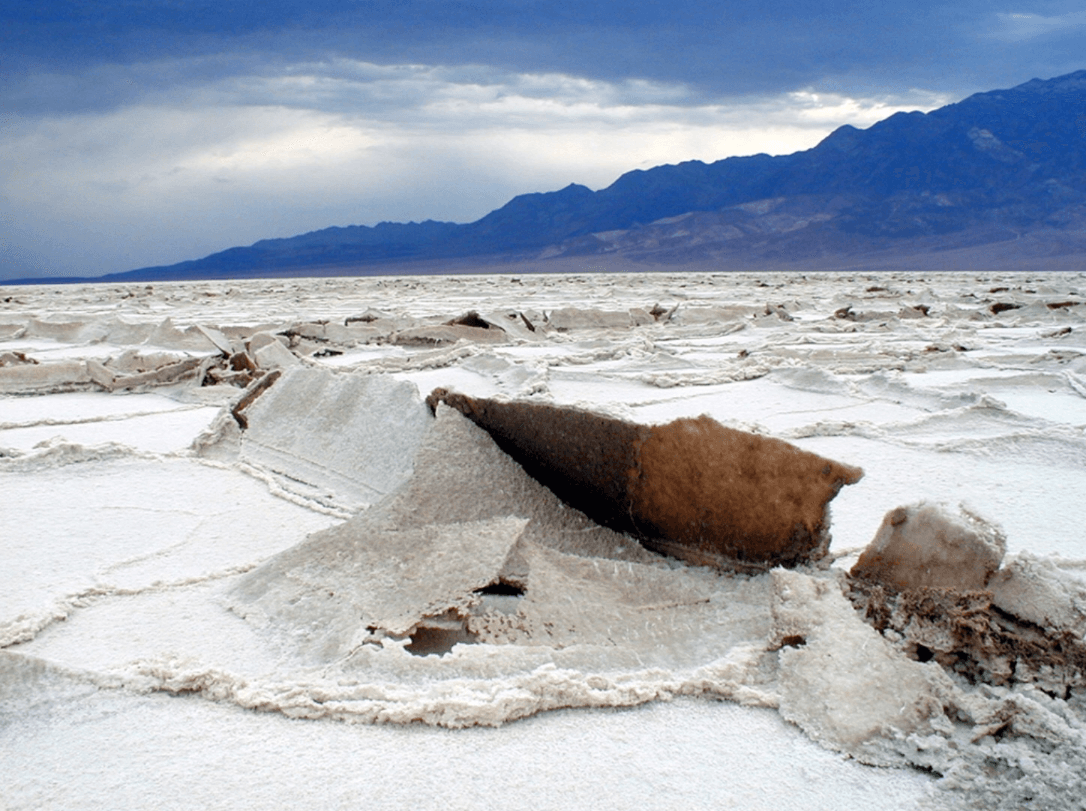
The white stuff in this picture is not sand; it’s salt. This area in California was once inundated with water, but the water has since evaporated and left rock salt behind.
Another example of a chemical sedimentary rock is chert, which is composed of microcrystalline quartz. Chert forms when dissolved silica materials (like quartz) precipitate out of a solution. Flint, jasper, and agate are different varieties of chert.
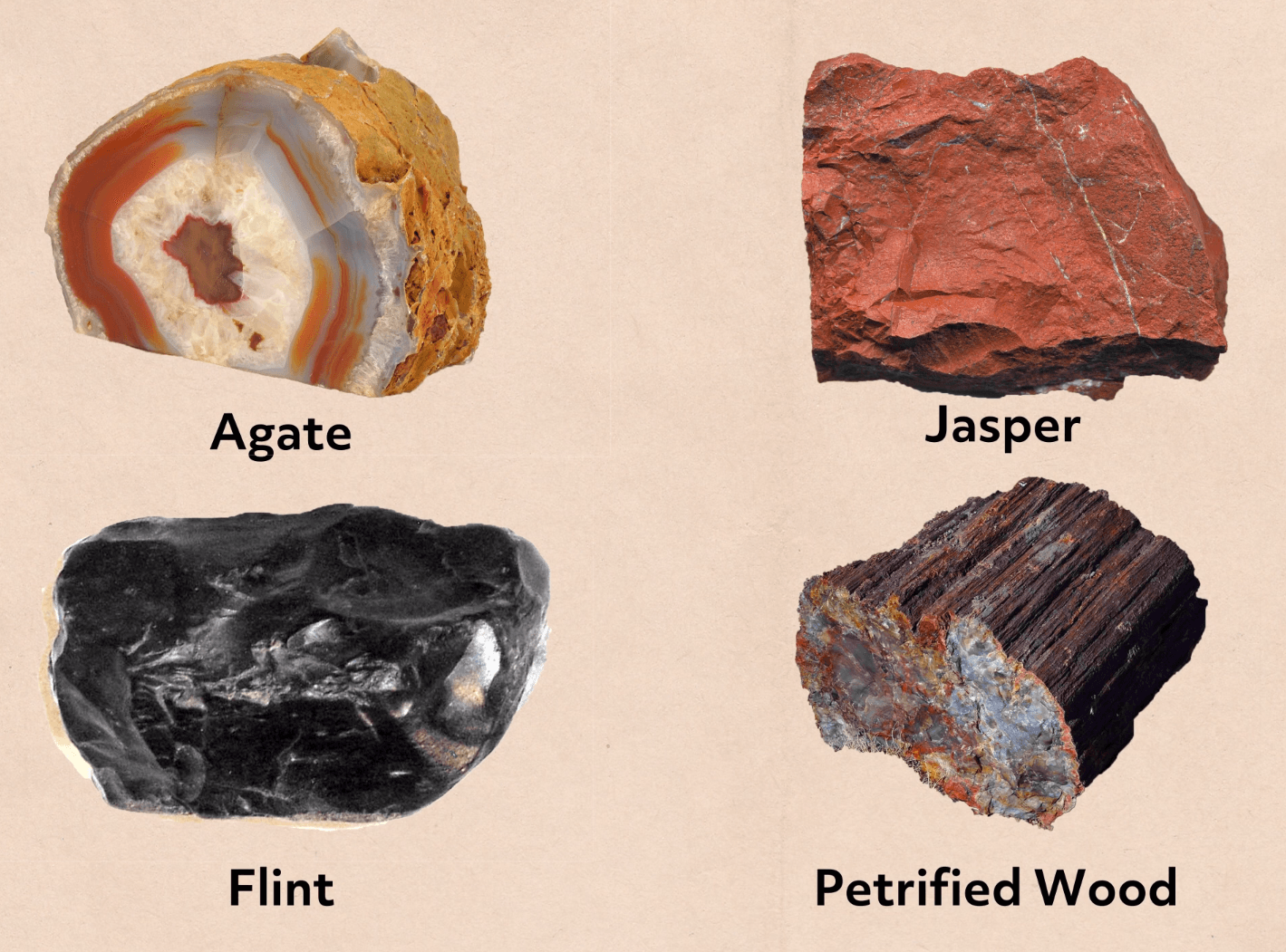
The last type of sedimentary rock is organic. These sedimentary rocks form from the carbon-rich remains of organisms. Coal is an example of this type of rock, as it is formed when dead plant matter decays and is converted into coal by the heat and pressure of deep burial.
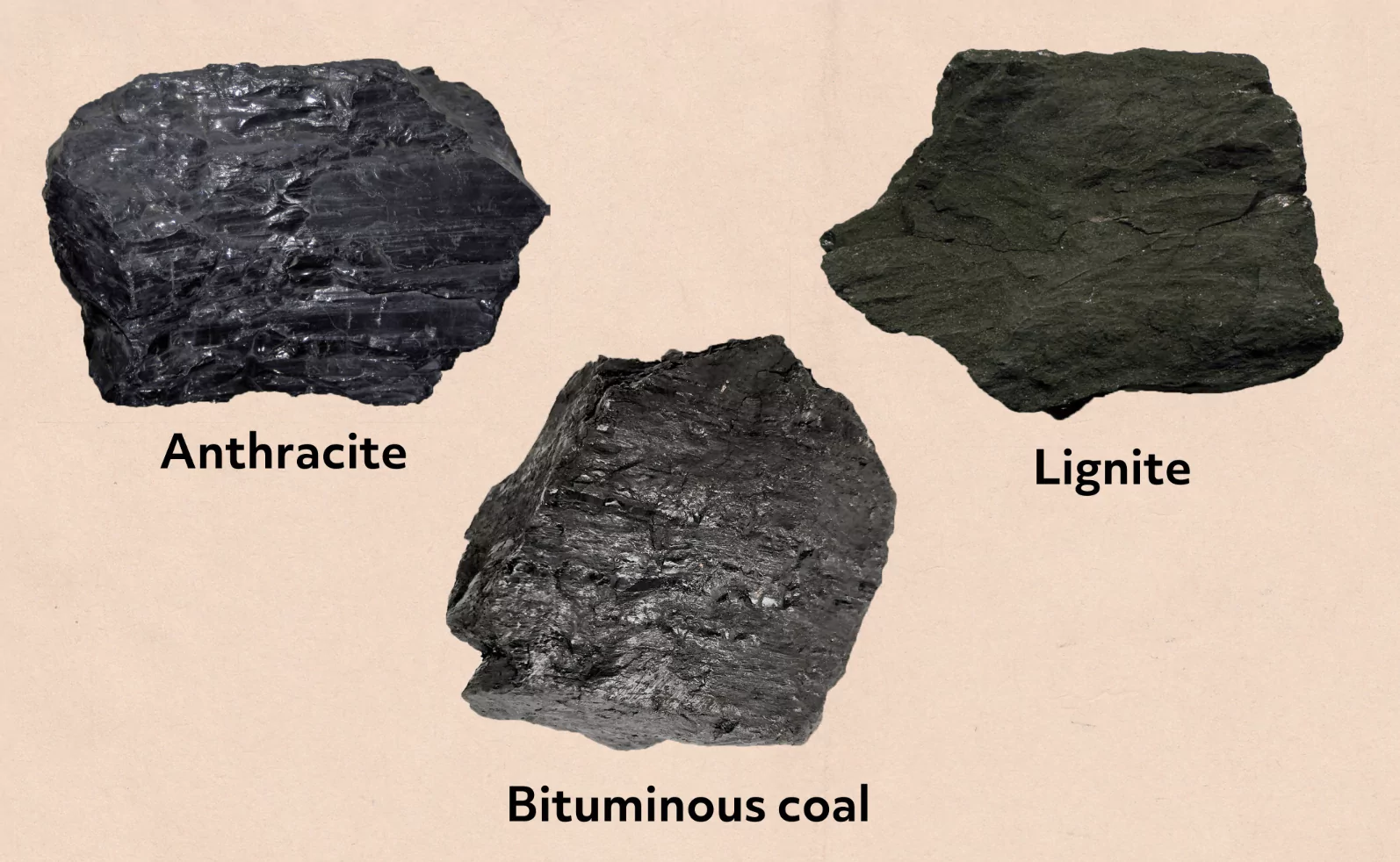
Sometimes, you can even see plant structures like leaves or bark in coal.
Okay, so sedimentary rocks form from the deposition of sediment. But, how exactly? It’s actually pretty simple. Sediments turn into sedimentary rock through the process of lithification, which involves compaction and cementation.
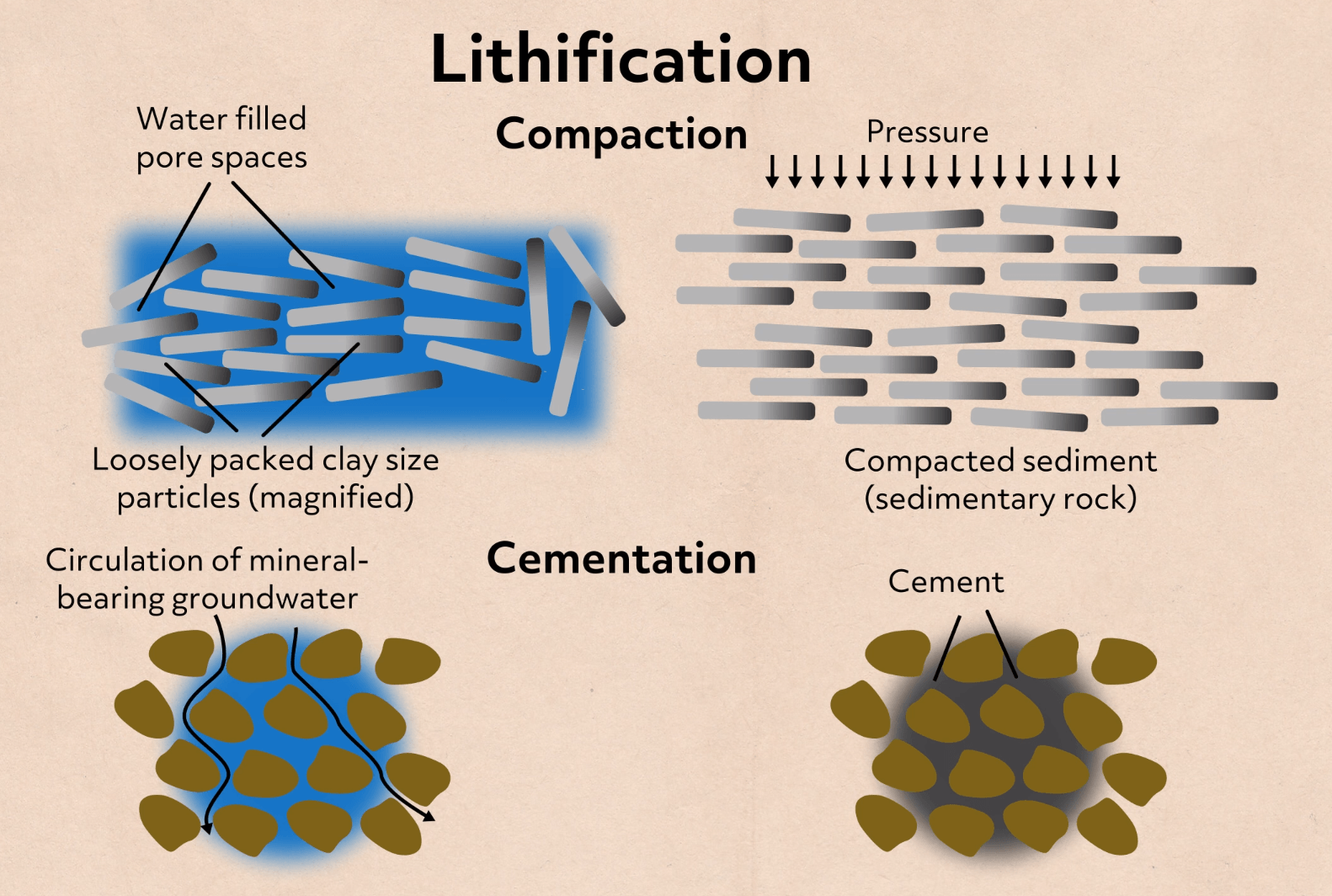
As sediments are buried by overlying material, the pressure eventually compacts the sediment so much that all available pore space is eliminated and essentially “glues” the sediment together. Voila, sedimentary rock!
Let’s move on to the next type of rock: metamorphic.
Metamorphic Rock
Metamorphism means “to change form,” which gives us a clue as to how this type of rock is formed. Metamorphic rocks form from the transition of one rock to another by temperatures and/or pressures that differ from the rock’s original formation. The main things that drive metamorphism are heat, confining pressure, and differential stress, the most important of these being heat.
As you go further and further toward the earth’s core, there is a geothermal gradient, meaning there is an increase in temperature with depth. The further a rock is buried, the hotter it’s going to be. Confining pressure is simply when force is applied equally in all directions. Differential stress is also confining pressure, but the force is unequal and occurs in different directions.
As you can see from the picture here, confined pressure results in nice, parallel layers.

Differential stress results in layers that are uneven or sideways.
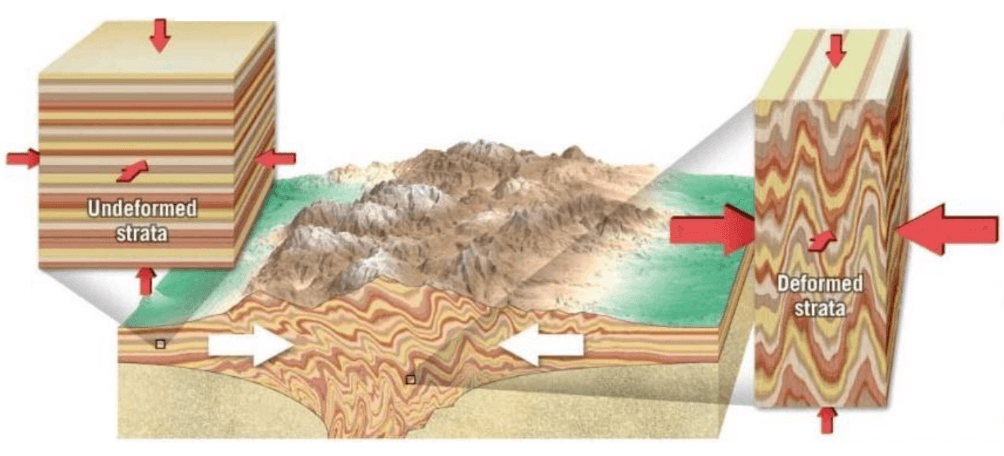
One example of metamorphic rock is marble.
Marble’s parent rock is the chemical sedimentary rock limestone, which turns into marble after being buried and subjected to increased temperature and pressure.
Let’s now switch gears to our last type of rock: igneous.
Igneous Rock
Igneous rocks form as molten rock (magma) cools and solidifies. Now, as a reminder, magma is NOT the same as lava. Magma is molten rock beneath the earth’s surface, and lava is molten rock that is ABOVE the earth’s surface.
There are three ways to create magma: a decrease in pressure, introduction of water, and the heating of crystal rocks above their melting temperature. Magma is generated in the earth’s uppermost mantle, which is primarily composed of solid rock. At places like divergent plate boundaries and hot spots, decompression melting is taking place, which is a reduction in pressure without a change in temperature. When magma is eventually forced upward to the surface and becomes lava, igneous rocks will have formed.

At subduction zones, the addition of water can lower the melting temperature of rock, allowing magma chambers to form.

What you’re looking at here is a volcanic island arc. When an oceanic plate moves and sinks beneath a continental plate, it brings water along with it. The added water will lower the melting temperature of the overlying rock, and force magma to the surface, which often results in the formation of volcanoes. All the stuff that spews out during a volcanic eruption is igneous rock!
In any case, when magma is forced upwards to the surface, it brings along chunks of the rock through which it’s traveling. When reaching the surface, the rate of cooling will determine the grain size of the resulting igneous rocks. In a volcanic eruption, for instance, there is little time for atoms to arrange in a particular structure, so these igneous rocks will have fine grain sizes that contain little to no minerals. Volcanic glass is an example of an igneous rock that cooled very quickly.

Magma that is cooled at a slow rate will allow minerals to grow and form, resulting in a coarse grain texture. An example of this is granite.
Remember when I mentioned the rock cycle? If you haven’t figured it out by now, the buried metamorphic rock will eventually melt and be brought back to the surface and become an igneous rock. That igneous rock, over millions of years, will erode (by mechanical or chemical weathering) and once again become a sedimentary rock. Rinse, lather, repeat.
Review
Now that you know everything there is to know about sedimentary, metamorphic, and igneous rocks, let’s go over a couple of review questions.
1. If a sedimentary rock has silt or clay-sized particles, what would it be classified as?
- Shale
- Sandstone
- Breccia
2. What is one way a metamorphic rock can form?
- Deposition of sediment
- Increased heat and/or pressure
- Volcanic activity
3. What is assimilation?
- The melting of surrounding rock by rising magma in which the overall composition of the magma is changed.
- The decrease in pressure that may allow magma to rise to the surface at a mid-ocean ridge.
- The process in which igneous rocks cool so quickly that minerals do not have time to form.
I hope this review was helpful! Thanks for watching, and happy studying!